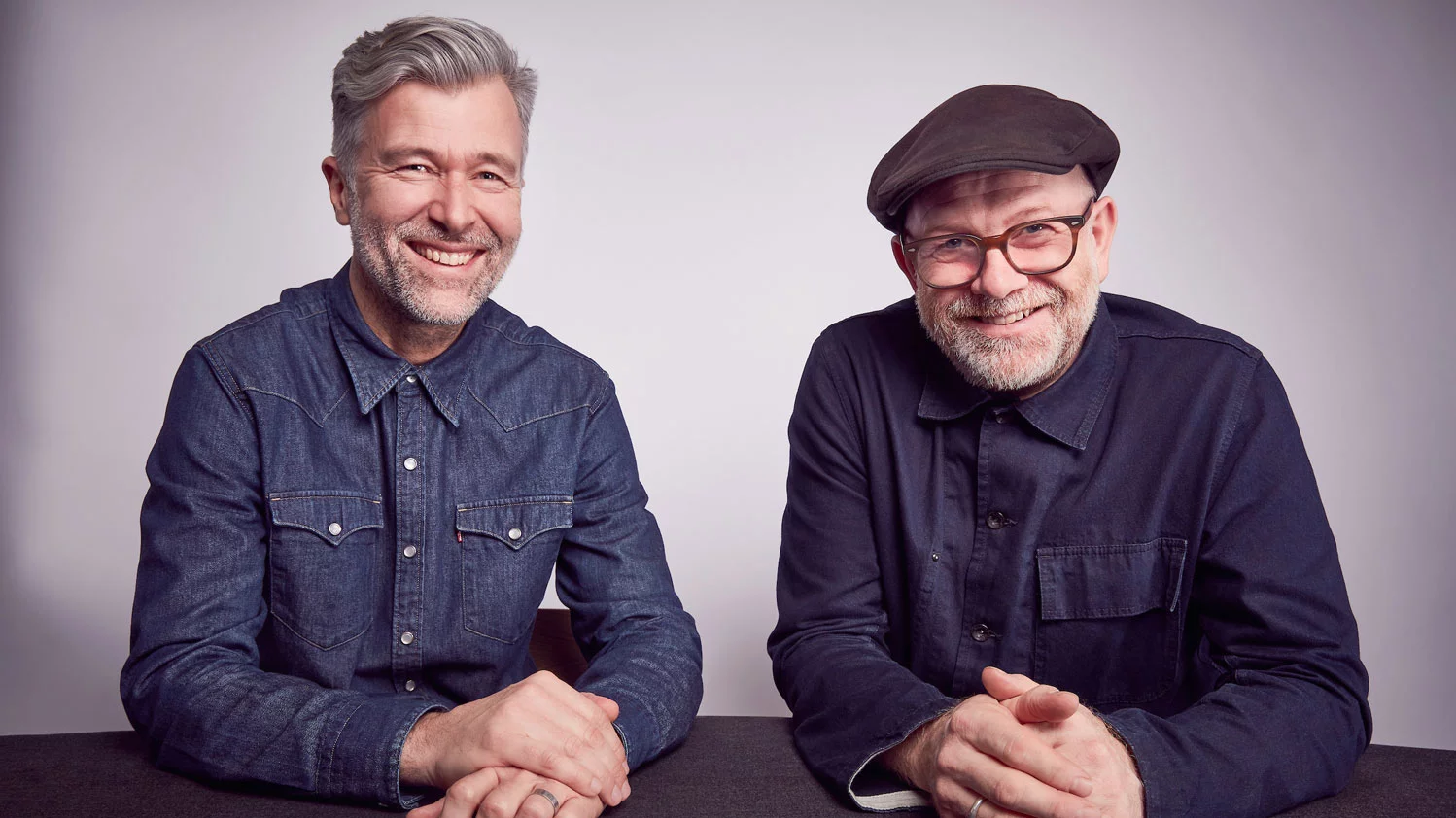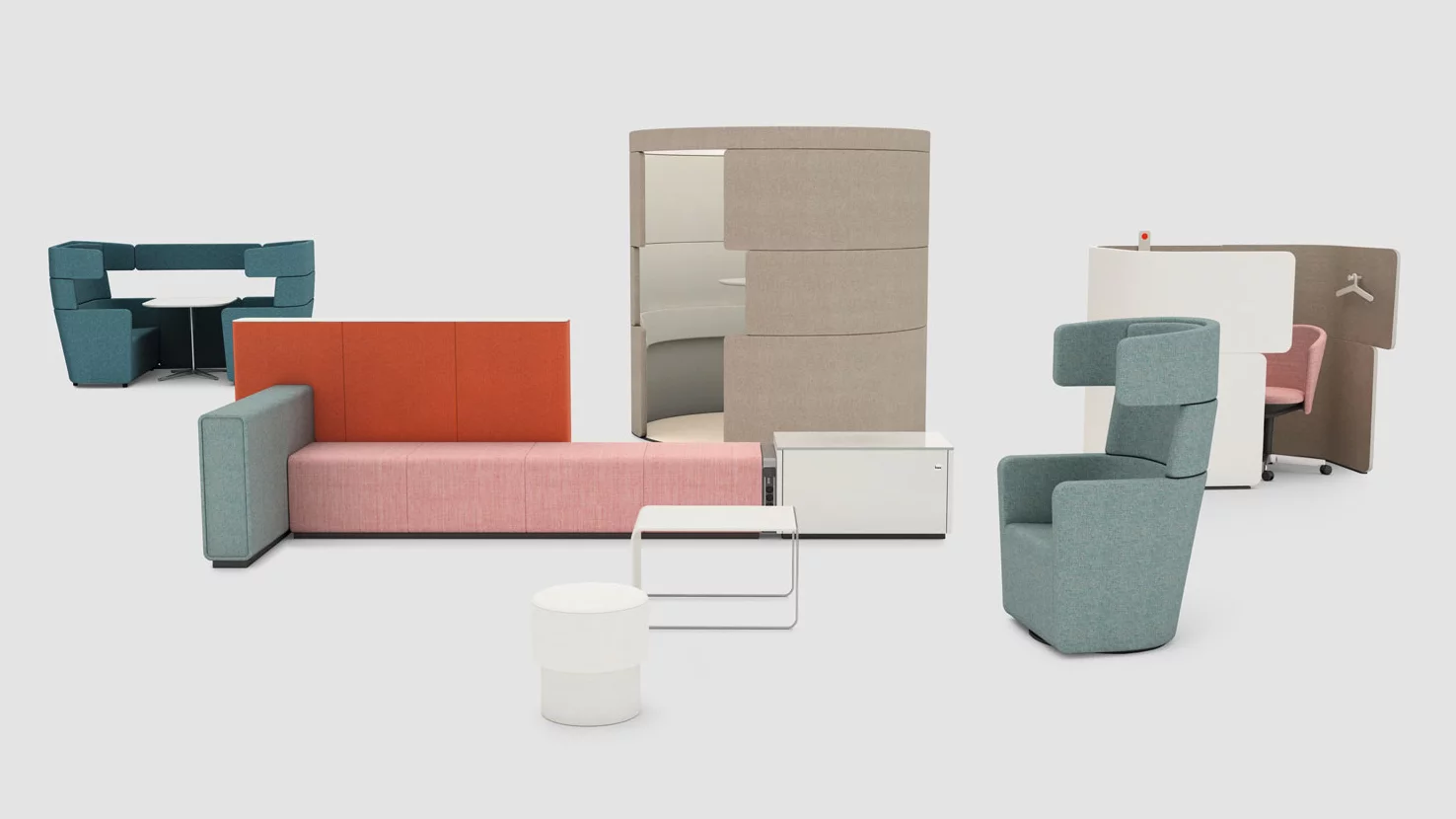10 YEARS PARCS
Interview with designers Tom Lloyd & Luke Pearson


Interview with designers Tom Lloyd & Luke Pearson
PARCS was launched in 2009. Now it’s ten years later: how would you describe the impact PARCS had on the market?
Tom Lloyd: The launch of PARCS in 2009 coincided with the emergence of ‘Collaborative work’ in contemporary office environments. Up until this point, neither of the two primary types of workspace; desk and formal meeting room, allowed or facilitated interactions where people could interact in a creative and informal manner. PARCS was perhaps the first true furniture collection to actively facilitate informal meetings that can take place away from the desk. In 2009, the Toguna, Causeway or Wing Series represented a quite radical departure from the status quo. Today, the market is saturated with such typologies. To understand this helps to clarify the impact and the influence that PARCS has had on the workplace in the last decade. It can clearly be seen a true innovator in the market.
Luke Pearson: The impact has been visibly massive. Firstly we see the influence in how Parcs has spawned lots of similar products, which in many ways is proof of its success. More interestingly culturally and economically for business is how Parcs has helped to support and foster a confidence in organisations that knowledge and creative work is not always best done at the desk. Those days really seem so very far away now in terms of how we imagine the office visually and functionally. Parcs was in many ways a catalyst on the one hand and on the other a very successful commercial product. Its often referred to as the first time a collection of disparate product worked to provide settings with complimentary function.
Do users work in PARCS zones the way you intended?
TL: In the PARCS collection, we wanted to give people a real choice of space and experience, so that we were not dictating how or where they should work. We did not want to presume that we knew what would be comfortable for a particular type or length of meeting.
So, we never really wanted to define how people use the PARCS collection. It was more that we wanted to facilitate a different type of use, a different type of interaction, a different type of communication.
LP: Mostly I think they do. The Toguna has perhaps been a surprise success in that we have sold so many and it’s quite a radical idea in many ways. However, when you design something that hasn’t been done before function is never quite what was intended. It would be arrogant to assume this and progress is so often driven by things we don’t fully define. For a designer this is how we gain insight and imagine what could be next.

How did the working environment change in the last ten years?
TL: One of the most significant agents and catalysts for change in the last 10 years has been a technological one. The ability for people to leave their desk with both their productivity tools (laptop) and the communication tools (smartphone) and still be able to communicate with and between teams really lies at the heart of change in the last decade. This has also allowed organisations to move away from fixed address workstations for individuals to a culture of free address workstations where people can share different types of work setting with colleagues. This is a major cultural shift in the way in which organisations plan their workspaces and the way in which people have to operate within those spaces.
LP: The changes in the last 10 years have been massive. Perhaps the most rapid we have seen. The confidence in technology and information ‘on the go’ have further diminished the hold the workstation used to have over office design. It’s not disappeared but the workplace is more balanced in terms of culture and product now. We also have to recognize that we have an incredible mix of demographic now in the work place. Those that’s started their professional lives on land line phones and no internet and those that don’t remember the world without the internet and smart phones. The culture of the workforce is perhaps the biggest change. Our physical interactions, due to changes in technology and work styles, have literally broken down the traditional walls.
Please describe PARCS in three words.
TL: Oxygen for the office.
LP: Simple. Humble. Enabling.
What is your favorite PARCS product?
TL: My personal favourite is the Toguna. The route of the product came from personal experience with the Dogon people of Mali in West Africa, who established in their history the original Toguna shelter for village elders. Both dynamic and enjoyable to use, it is a great representative of the PARCS collection.
LP: I would say the American Diner because I think it became an incredible benchmark for the industry.

What developments do you see today and what impact does PARCS have nowadays?
TL: The idea of collaborative work as a central component of the knowledge economy is here to stay. PARCS still has a major role to play in delivering high-quality spaces and places where people can interact in informal dynamic environments. There are three new themes today that were not present 10 years ago. Concentration. The rise of high-density benching has had the unintentional consequence of damaging people’s ability to focus while at work. This will stimulate new solutions and new variations in the workplace in order to find the right balance between collaboration and concentration. Wellness. All the evidence suggests that physically and emotionally nourished people are more likely to work in a productive healthy and stimulating way. This can only be good for organisations. Therefore, the need and the desire to give people great work environments goes hand-inhand with the needs and desires for organisations to be profitable and successful. The Environment. We can no longer turn our backs on the absolute necessity for humanity to reduce the damaging impact of our current habits on the environment. This is both a personal and professional responsibility.
LP: Today we talk about adaptive spaces rather than humans adapting. We have greater and greater choice for really tuning our work styles through careful product choice. However, humans intrinsically, physically and emotionally are the same. I think some of the base needs we defined within the Parcs collection are still quite appropriate today 10 years from its birth. Perhaps it’s because we looked at fundamental emotional and postural needs with PARCS it’s still very relevant today.
What’s next? Which changes do you expect the next 10 years in working environments?
TL: The greatest theme we recognise is that of the shared economy. Today through the likes of Instagram, Airbnb, Uber, We Work, we now share our lives and the functions of our lives with the people around us. This is stimulating new types of business, ways of consuming, types of space and place and the everyday functions of our lives. By moving from an ownership model, to a subscription model of consumption, it may also give us new opportunities to reduce our impact of the planet by consuming less and only what we really need.
LP: I imagine more mobility, more choice for the consumer and smarter products. I don’t so much anticipate technology will reside in everything, rather that we recognize that product should support peoples needs and be intrinsically adaptive rather than prescriptive. After all nobody really wants to be told what to do or dictated to.



